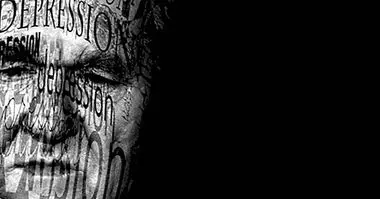15 steps to perform a mental examination in therapy
In a therapeutic intervention it is essential that the psychologist collect all the possible information of the patient: family environment, social, economic, work or educational conditions and clinical history. In order to make a diagnosis as accurate as possible it is important to take into account the above and add all observations and what was collected in the mental examination .
This is done during therapy sessions; it is shaped both by observations and inferences by the psychologist and by what the patient says and expresses.
The health professional will have to clarify and update diagnostic aspects and therapeutic decisions according to the changes you observe during the interviews.
- Related article: "How to correctly write a psychological report, in 11 steps"
How to perform a mental exam
These are the 15 elements to analyze to perform a mental examination:
1. Physical appearance
Pay attention to the posture, personal grooming, dress and body shape. If the patient has been treated for a long time, it is important note changes that have been observed since the last session , since they tend to be related to the evolution of the mental state.
2. Orientation
Make sure it covers all 3 dimensions: personal, temporal and spatial. Basic questions about your name, date of birth, date of the session , place where the interview is conducted.
3. Speech and language
Evaluate the speed of speech, volume of the voice, articulation of words, coherence and spontaneity.
4. Motor activity
Emphasis on standing, walking, posture, facial gestures, tics, abnormal movements (tremors, automatisms) and general movement of the body. Observe if they are exaggerated movements, it can be a sign of a manic phase, or slow, that could be a sign of a depressive phase or schizophrenic disorder . It is important that in subsequent sessions, changes are observed in response to drugs and therapy.
- Related article: "The 6 types of schizophrenia and associated characteristics"
5. Affection
It is the emotional state expressed by the patient throughout the interview. You can see inconsistencies and that the affection is inappropriate in relation to the facts that counts , as well as absence of affective response or instability.
6. Mood
It can not be observed, rather it is inferred by the psychologist and you have to make a comparison between what you observe and what the patient says . This describes your mood in the last days or weeks.
7. Expression of thought
Assess the form of expression, speed of thought and quality of ideational flow. If it is logical, if it has a purpose, if it is tangential, if there are ideational leaks or failure in associations . The alterations in this element can represent disorders of thought, a manic phase of Bipolar Disorder, intoxication by substances.
8. Content of thought
What it contains: if there is presence of delusional thinking , common in schizophrenic and thought disorders; obsessive, mainly in obsessive-compulsive disorder, but which can also appear in disorders of eating behavior and impulse control; or overrated ideas.
9. Perceptual alterations
It is necessary to ask directly if the patient sees, hears, smells or feels things that are not based on any sensory or sensory stimulus, that he knows that others do not feel or perceive it. The therapist must also be attentive to the patient's reactions to the questions, if in answering first turn to another side or talk to someone else. The alterations are related to hallucinations, schizophrenic and psychotic disorders or substance intoxication.
- Maybe you're interested: "The differences between hallucination, pseudo-hallucination and hallucinosis"
10. Suicidal and / or homicidal ideation
It is extremely important to address in patients who have a history of violent acts, problems with the law, personal history of autolytic intent or family. If the interview shows that you plan to commit suicide or kill someone, you must change the focus immediately, this element becomes urgent. It is necessary to direct it to hospital care in case of suicidal ideation or notify the police, in case of homicidal ideation.
- Related article: "Suicidal thoughts: causes, symptoms and therapy"
11. Attention, concentration and memory
It can be evaluated without the need for specific questions, but only by analyzing behaviors and responses during the session. If you do not have enough information, you can ask the patient to spell words to the right and vice versa, make them remember series of numbers or letters.It is important that this section takes into account the cultural and educational level of the patient.
In case you suspect a cognitive deficit, It is recommended to apply the Mini-Cognitive Exam .
12. Abstract thinking
The simplest way to evaluate this element is by asking the patient to explain the meaning of some proverb or proverb. Concrete thinking can be presented as an alteration or as a symptom of some mental disorder as for example schizophrenia.
13. Insight
It is the level of understanding of the current mental situation, whether one has a disorder or not. The degree of therapeutic compliance can serve as an indicator for this step.
14. Judgment capacity
It is advisable to ask questions about how you react to specific situations that have a high probability of occurring and that are related to the patient's daily life.
15. Neurovegetative, sexual and appetite
These elements are evaluated with specific questions: sleep cycle, how much sleep, quality of sleep and frequency. If there have been changes in your sexual motivation and practices with your partner (if you have) or if there has been any change in your eating habits or your appetite.
Its use in psychotherapy
The mental examination is not a one-time evaluation, but constantly, throughout the therapeutic treatment , the psychologist must be analyzing and evaluating these aspects to have a broader picture of the evolution of the individual. It is important that all the changes that are observed be recorded to find possible causes and infer consequences. And in this way, to mold the therapy according to the needs of the patient.



















